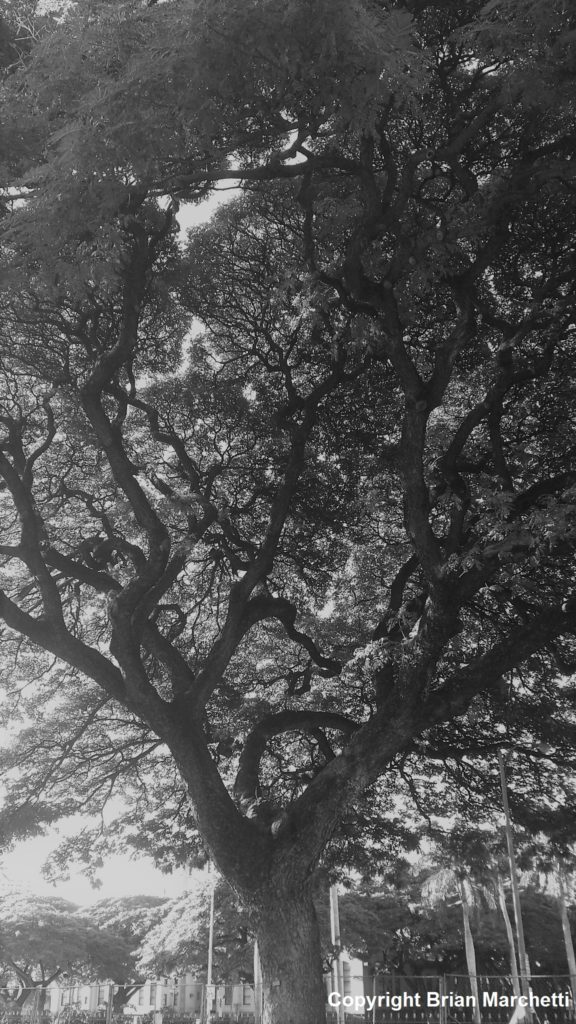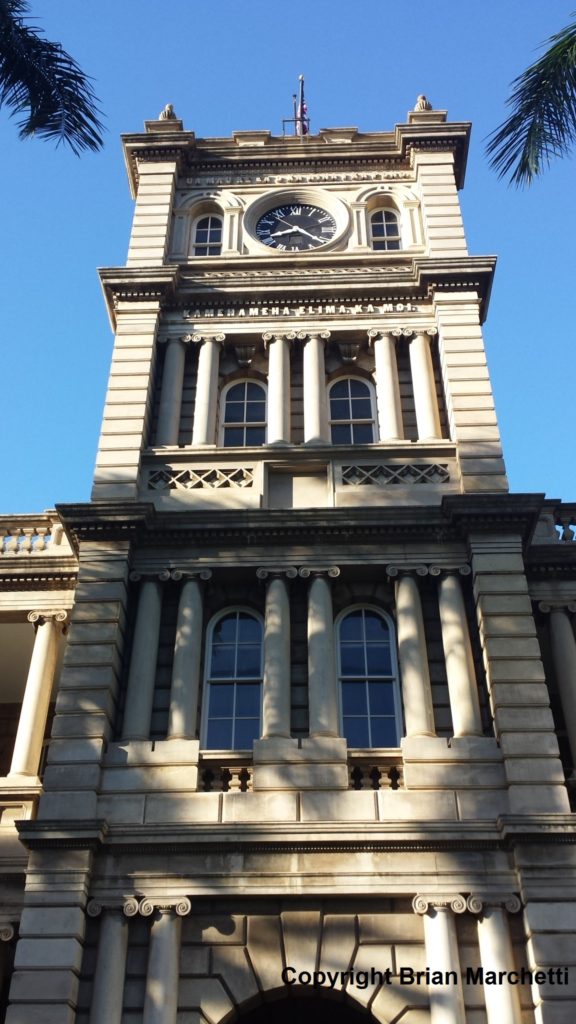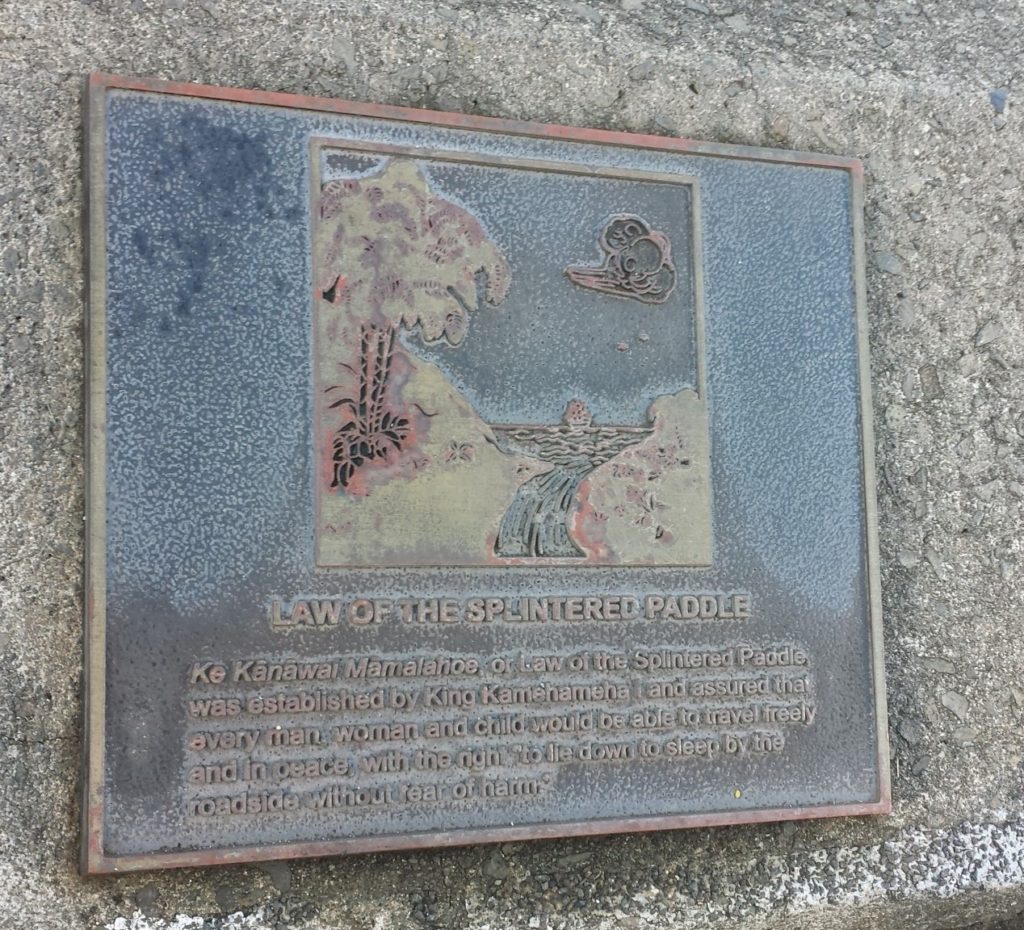The Beautiful Urbanism of Hawaii
I, like so many visitors to Hawaii, strive to stay in the more scenic and open areas of the island chain, and I picture that when planning the next trip. I have been conducting technical studies (traffic circulation, impacts, promoting travel not only by vehicles, but also by walking, transit, bicycling…Anyhoo….) for a developer with offices in Honolulu and Los Angeles. On my first trip to Honolulu on business, I stayed in the Ala Moana area, and was struck by the urban yet beautiful downtown district and Chinatown area.
For one, I began to love the Monkeypod/Rain trees all along the sidewalks, with their large high canopies and beautiful varied branch structures. They surround the grounds of the Iolani Palace across the street from the subject matter in this post, and many other civic locations. They became the primary icons of the City to me. Oahu does not necessarily have great boulevards where the pedestrian experience is amazing, although in some areas that is improving, but it the experience next to highways and other big streets is greatly softened by these trees.
In checking out some of the government and historical monuments in the Downtown area, including the Iolani Palace, the grounds and architecture of another smaller building caught my eye. I crossed the street to see it closer. It has an interesting colonial aspect to it, but it’s unmistakably Hawaiian.
A description of the building, straight from the aloha-hawaii.com web site:
“The historic Aliiolani Hale building was the first major Western-style structure built by the Hawaiian monarchy and is notable for its distinctive clock tower.”
A very beautiful building, and it played an important part of the final years of Hawaiian self-rule, and in the modern age as a State it houses what I would perhaps too-simply summarize as a judicial history of Hawaii. On the grounds are some interesting historical plaques, including this one which describes a very specific decree related to freedom of travel within Hawaii.
Overall, the Downtown area has many interesting buildings to visit to see the urban side and historic/political side to Hawaii. There obviously is a lot to say about Hawaii’s self-rule past, its difficult and uneasy and very much forced transition to State-hood, but I won’t be delving into that here.
Seeing this history and proud architecture and civic environment, and the more natural areas such as Ala Moana city/beach park and other sites on more recent trips such as Sunset Beach and the North Shore, it creates a dichotomy that makes you see that beauty and nature and peace should be appreciated so much when you are enveloped in it. There is a whole other side that is complex and perhaps necessary and full of strife, and pain, but also progress, and some fixing of mistakes at least we can hope over time. The beauty becomes almost overwhelming then, when you recognize there is an opposite.
The Iolani Palace and State Capital Building also are very unique and show examples of definitive time periods in the State’s history. I’ll save those for another post….
Aloha.



